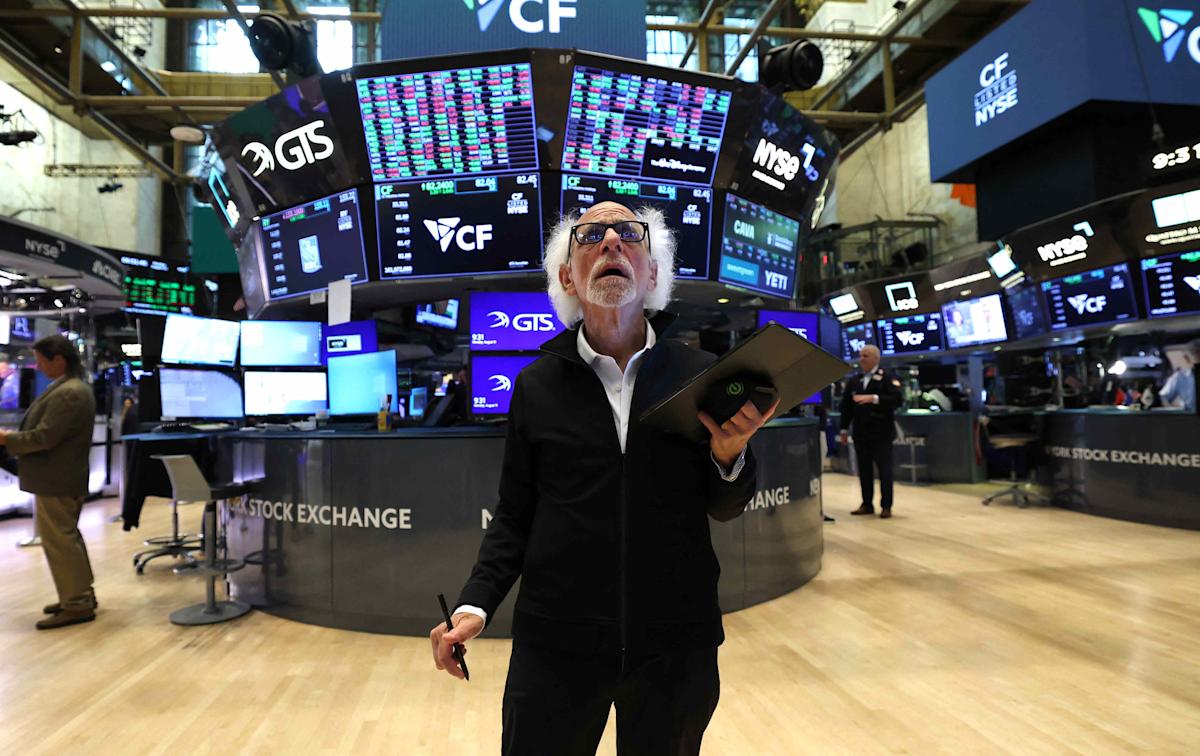Do These Markets Feel ‘Healthy’ to You? Some Experts Say to Back Off Stocks
Timothy A. Clary / AFP via Getty Images
Stocks fell Monday, which may have some thinking that things aren’t looking up in markets these days.
-
Veteran bond investor Jeff Gundlach today listed a range of ways today’s markets break with convention, saying investors should have a maximum of 40% of their portfolios in stocks.
-
But not everyone’s bearish today. The “potency of the AI narrative” is making this market look like the dotcom boom, according to BCA Research’s Doug Peta.
Many investors have taken a glass-half-full view of markets lately. But others see the glass as cracked.
On Monday, as stocks dropped to start a busy week, it seemed the latter group had a firmer hold on the microphone. The VIX, Wall Street’s so-called fear index, was recently around 23, creeping further into the territory associated with worry. CNN’s worry measure recently pointed toward “Extreme Fear.”
Veteran bond investor Jeffrey Gundlach now says almost all financial assets look overvalued—and he observes atypical relationships across asset classes. Private credit defaults are being compared to cockroaches-in-hiding, and AI-stock valuations to the dotcom bubble—even though Nvidia’s (NVDA) earnings, which could give stocks a shot in the arm, are just days away.
Some investors are cutting their equity exposure. A Deutsche Bank report showed that discretionary investors were underweight stocks again, moving to the bottom of the positioning range that has been in place since the early 2025 tariff tantrum. Saudi Arabia’s sovereign wealth fund in the third quarter cut its positions in U.S. stocks, according to the Financial Times.
Some cautious investors have fixated on AI hype and tech-stock valuations as reasons to be worried. But there are plenty of other issues that warrant a rethink of conventional asset allocation, according to market watchers who think the market doesn’t feel “healthy” at present.
The U.S. stock market feels the “least healthy” it has been in decades, across classic valuation metrics including price-to-earnings and the CAPE ratios, Gundlach said in the most recent episode of Bloomberg’s Odd Lots podcast. Gundlach said investors should eschew the 60/40 portfolio and have no more than 40% in equities, with most of that outside of the U.S.; 25% in bonds; 15% in gold (prior to the precious metal’s rally, he said 25% was ideal); and the rest in cash.
This market, per Gundlach, is unlike those of the past. For example, he said, short- and long-term treasury rates have historically declined when the Fed moves to cut its benchmark rate, but outside of the two-year bonds, yields are higher than they were before the first cut. Meanwhile, he said, the U.S. dollar has climbed as stocks declined in the past 12 S&P 500 corrections since 2000, but in March and April the dollar swooned alongside equity markets.



Leave a Comment
Your email address will not be published. Required fields are marked *